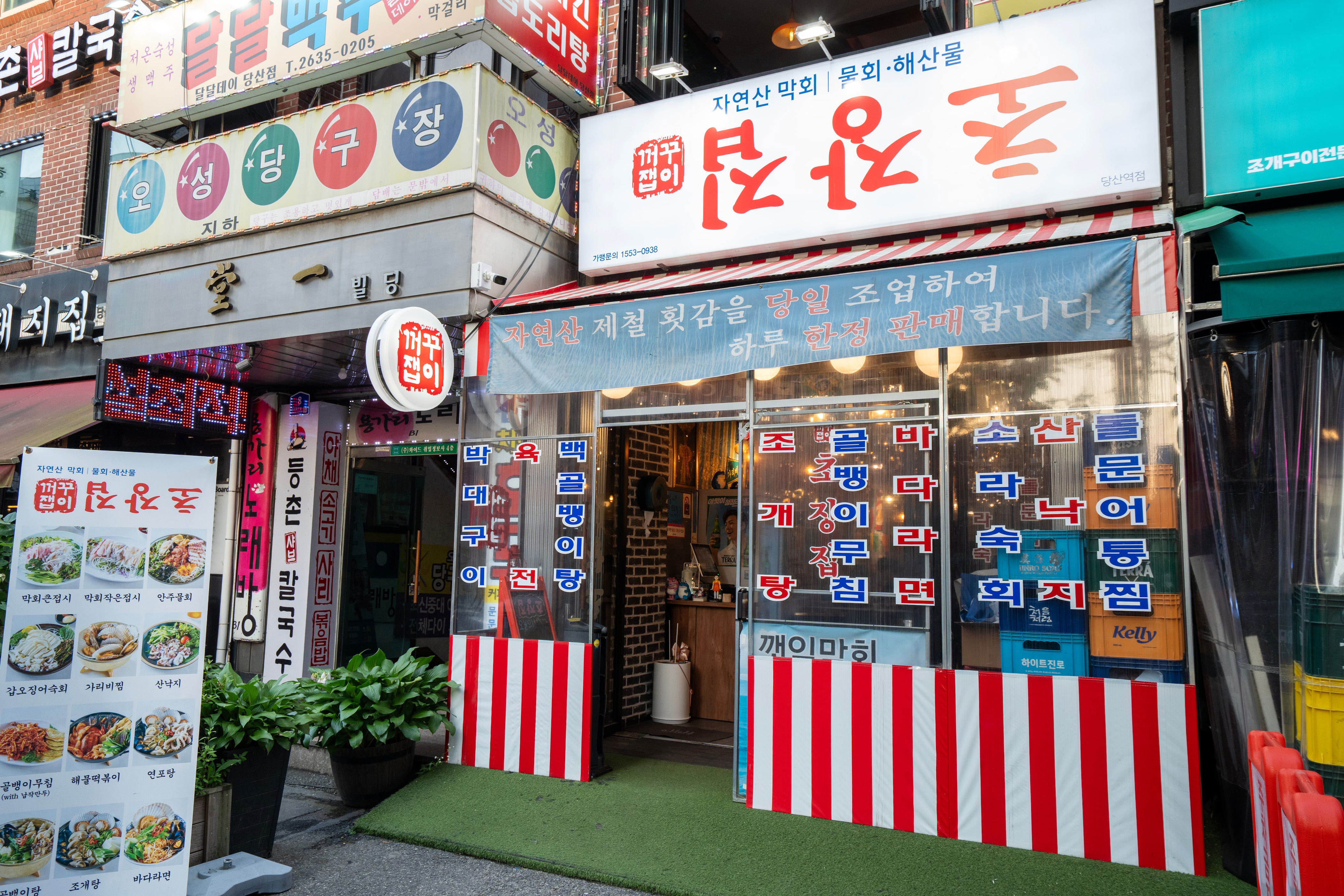Seoul’s MZs are fueling the ‘NEW-PO’ trend
A seafood restaurant in Dangsan-dong, Yeongdeungpo District, Seoul, is gaining popularity for its fresh take on the pojangmacha, wagon-style street food stall, concept. Called Keokujaebi Chojangjip, it features a quirky, colorful interior with bamboo blinds lining the walls. Alternating baby blue and white fabric covers the upper half of the walls, with menus plastered on top. Round steel tables—resembling silver trays set on oil drums—line the space, accompanied by matching stools.
Though it opened last year, the restaurant’s nostalgic concept alone has made it a hot spot. Surprisingly, the target customers aren’t those born in the 1970s and 1980s. Instead, nine out of 10 visitors are in their 20s to 40s.


When the future feels uncertain, people turn to nostalgia. Following the boom of retro themes in food and fashion, restaurants with a nopo aesthetic—meaning “old store” in Korean—are on the rise. Originally used to describe legacy eateries or bars, nopo referred to small restaurants or shops in alleyways of places like Euljiro and Jongno that served working-class patrons.
To earn the nopo label, an establishment traditionally needed to be passed down for generations. However, many of today’s trending restaurants are not true nopos, but newly opened spots with a nostalgic twist. These are nicknamed “NEW-PO,” a blend of “new” and nopo. While new brands, they borrow the form and feel of classic eateries. From interior decor to tableware to menus, everything mimics the look of old pojangmachas in neighborhoods like Ikseon-dong, Pimatgol and Euljiro.
One example is Pirultz Coffeehouse in Yongsan District. Opened in September of last year, the cafe is modeled after a traditional dabang, or old-style Korean coffeehouse. With red faux leather chairs and dark red wood interiors, it faithfully recreates the feel of a bygone era—yet the crowd is full of young people in baggy pants and crop tops. The signature menu item is Vienna coffee topped with thick cream. In the evening, guests can pair wine with a bowl of instant yukgaejang, spicy beef soup, ramen.

Another wave of restaurants riding the NEW-PO trend specializes in frozen pork belly. In the 1980s, when refrigeration technology was still developing, most meat was stored and distributed frozen. Thinly sliced frozen pork belly became the norm—and now, a nostalgic favorite—fueling a boom in restaurants dedicated to it.
The rise of “imokase” dining—where an imo (a warm, familiar Korean term for a female restaurant owner) serves a different dish each day—has also contributed to the NEW-PO boom. The trend is reinforced by food influencers racing to spotlight hidden old-style eateries, the vanishing of traditional dining alleys due to urban redevelopment, and a growing focus on reducing interior design costs. Together, these factors have led to an exponential increase in NEW-PO restaurants in recent years.
Cha Bu-cheol, director of Daheung Design and a veteran of more than 25 years in restaurant interiors, said, “The Russia-Ukraine war caused a sharp rise in raw material and labor costs. The nopo-style concept emerged to cut costs. It helps owners lower start-up expenses and offer more affordable food, which in turn draws customers.”
Young diners are also drawn to NEW-PO spots because the retro aesthetic comes without the hygiene concerns that may have plagued the originals. Clean kitchens and restrooms help modernize the nostalgic experience.
Those who miss the charm of Pimatgol, Daehangno or Euljiro’s old printing alleyways now flock to NEW-PO restaurants—hoping to revive, and relive, the past.
Posting Komentar untuk "Seoul’s MZs are fueling the ‘NEW-PO’ trend"
Posting Komentar